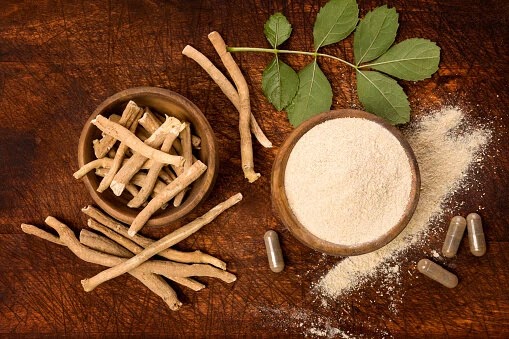Outline of the Article
I. Introduction
A. Definition of High Fiber Vegetables
B. Importance of Gut Health
II. Benefits of High Fiber Vegetables
A. Improved Digestion
B. Weight Management
C. Blood Sugar Regulation
III. Nutrient-Rich High Fiber Vegetables
A. Broccoli
B. Brussels Sprouts
C. Carrots
IV. Recipes Incorporating High-Fiber Vegetables
A. Fiber-Rich Smoothie
B. Roasted Vegetable Medley
V. Tips for Including High-Fiber Vegetables in Your Diet
A. Meal Prepping
B. Snack Ideas
C. Cooking Techniques
VI. Potential Side Effects and Precautions
A. Gradual Introduction
B. Hydration
VII. High Fiber Vegetables and Gut Microbiota
A. Connection between Fiber and Gut Microbiota
B. Impact on Overall Well-being
VIII. Choosing the Right High-Fiber Vegetables for You
A. Personal Preferences
B. Dietary Restrictions
IX. Common Myths About High-Fiber Vegetables
A. Fiber Causes Bloating
B. Only Certain Vegetables Provide Fiber
X. High-Fiber Vegetables for Specific Health Conditions
A. Diabetes
B. Heart Health
XI. Incorporating High Fiber Vegetables into Different Diets
A. Vegan and Vegetarian Diets
B. Mediterranean Diet
XII. Sustainable Benefits of Choosing High-Fiber Vegetables
A. Environmental Impact
B. Reducing Food Waste
XIII. Addressing Concerns and Misconceptions
A. Accessibility
B. Preparation Time
XIV. Success Stories and Testimonials
A. Personal Experiences
B. Transformative Health Journeys
XV. Conclusion
A. Recap of Key Points
B. Encouragement to Embrace High-Fiber Vegetables.
Rich in Fiber Vegetables
In today's fast-paced world, maintaining good health is a priority for many individuals. One of the key aspects contributing to overall well-being is gut health, and high-fiber vegetables emerge as the champions in this domain.
I. Introduction
A. Definition of High Fiber Vegetables
High-fiber vegetables refer to plant-based foods that are rich in dietary fiber. Fiber is a crucial component known for promoting digestive health and providing a range of other benefits.
B. Importance of Gut Health
The gut plays a pivotal role in the body's overall health, influencing digestion, nutrient absorption, and even immune function. Optimal gut health is essential for a thriving, energetic life.
II. Benefits of High Fiber Vegetables
A. Improved Digestion
The soluble and insoluble fiber in vegetables contribute to regular bowel movements and prevent constipation, fostering a healthy digestive system.
B. Weight Management
Including high-fiber vegetables in your diet can aid in weight management by promoting a feeling of fullness, and reducing overall calorie intake.
C. Blood Sugar Regulation
Certain vegetables, such as broccoli and Brussels sprouts, have been linked to better blood sugar control, making them beneficial for individuals with diabetes.
III. Nutrient-Rich High Fiber Vegetables
A. Broccoli
Known for its versatility and high nutrient content, broccoli is a powerhouse of fiber, vitamins, and minerals.
B. Brussels Sprouts
These miniature cabbages are not only delicious but also packed with fiber, contributing to a healthy gut.
C. Carrots
Carrots are not just for vision; they are also rich in fiber, promoting digestive health and providing essential nutrients.
IV. Recipes Incorporating High-Fiber Vegetables
A. Fiber-Rich Smoothie
Blend your favorite high-fiber vegetables with fruits for a delicious and nutritious smoothie, perfect for a quick and healthy breakfast.
B. Roasted Vegetable Medley
Create a colorful and flavorful roasted vegetable medley by combining various high-fiber veggies like bell peppers, zucchini, and eggplant.
V. Tips for Including High-Fiber Vegetables in Your Diet
A. Meal Prepping
Plan your meals in advance, incorporating a variety of high-fiber vegetables to ensure a well-balanced and fiber-rich diet.
B. Snack Ideas
Opt for vegetable-based snacks, such as carrot sticks with hummus, for a satisfying and healthy between-meal nibble.
C. Cooking Techniques
Experiment with different cooking methods, such as steaming, roasting, or grilling, to discover the most enjoyable ways to consume high-fiber vegetables.
VI. Potential Side Effects and Precautions
A. Gradual Introduction
Introduce high-fiber vegetables gradually to allow your digestive system to adapt, reducing the likelihood of bloating or discomfort.
B. Hydration
Ensure adequate hydration, as fiber absorbs water. Drinking enough fluids can prevent constipation and promote the smooth passage of food through the digestive tract.
VII. High Fiber Vegetables and Gut Microbiota
A. Connection between Fiber and Gut Microbiota
The fiber in vegetables acts as a prebiotic, nourishing the beneficial bacteria in the gut and promoting a balanced microbiota.
B. Impact on Overall Well-being
A healthy gut microbiota is linked to improved mood, better immune function, and a reduced risk of various diseases, emphasizing the holistic benefits of high-fiber vegetables.
VIII. Choosing the Right High-Fiber Vegetables for You
A. Personal Preferences
Select high-fiber vegetables that align with your taste preferences, ensuring a more enjoyable and sustainable dietary choice.
B. Dietary Restrictions
Consider any dietary restrictions or allergies when choosing high-fiber vegetables, ensuring they complement your overall nutritional needs.
IX. Common Myths About High-Fiber Vegetables
A. Fiber Causes Bloating
Contrary to popular belief, fiber, when introduced gradually, rarely causes bloating. It is an essential component of a healthy digestive system.
B. Only Certain Vegetables Provide Fiber
Many vegetables, beyond the commonly known ones, offer significant amounts of fiber. Exploring a variety of vegetables ensures a diverse nutrient intake.
X. High-Fiber Vegetables for Specific Health Conditions
A. Diabetes
Certain high-fiber vegetables, like leafy greens and broccoli, can be particularly beneficial for individuals with diabetes, aiding in blood sugar management.
B. Heart Health
Vegetables such as carrots and Brussels sprouts contribute to heart health by supporting cholesterol regulation and overall cardiovascular well-being.
XI. Incorporating High Fiber Vegetables into Different Diets
A. Vegan and Vegetarian Diets
High-fiber vegetables are essential for individuals following plant-based diets, providing vital nutrients and supporting overall health.
B. Mediterranean Diet
The Mediterranean diet, renowned for its health benefits, emphasizes the inclusion of fiber-rich vegetables, contributing to the diet's overall success.
XII. Sustainable Benefits of Choosing High-Fiber Vegetables
A. Environmental Impact
Opting for high-fiber vegetables is not only beneficial for personal health but also has a positive environmental impact, as plant-based diets are generally more sustainable.
B. Reducing Food Waste
Creative use of high-fiber vegetable scraps in recipes helps reduce food waste, aligning with a more sustainable approach to nutrition.
XIII. Addressing Concerns and Misconceptions
A. Accessibility
High-fiber vegetables are widely available, and a variety of options cater to different tastes and dietary needs, ensuring accessibility for everyone.
B. Preparation Time
Contrary to the misconception that cooking with high-fiber vegetables is time-consuming, many recipes are quick and easy, fitting into busy lifestyles.
XIV. Success Stories and Testimonials
A. Personal Experiences
Real-life success stories and testimonials from individuals who embraced high-fiber vegetables, showcasing the positive impact on their health and well-being.
B. Transformative Health Journeys
Explore the inspiring journeys of individuals who transformed their health through the incorporation of high-fiber vegetables into their daily diets.
XV. Conclusion
A. Recap of Key Points
High-fiber vegetables play a pivotal role in promoting gut health, offering a myriad of benefits, from improved digestion to supporting overall well-being.
B. Encouragement to Embrace High Fiber Vegetables
Encourage readers to incorporate a variety of high-fiber vegetables into their diets, experiment with recipes, and experience a positive impact on their health.









0 Comments